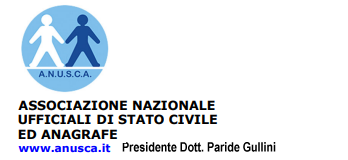|
Castel-San-Pietro-Terme The painted walls of Dozza Bologna ''la Dotta'' Walking around Bologna Gastronomy of Emilia The enchanted Venice Art & fashion in Florence Milan history & shopping |
|---|
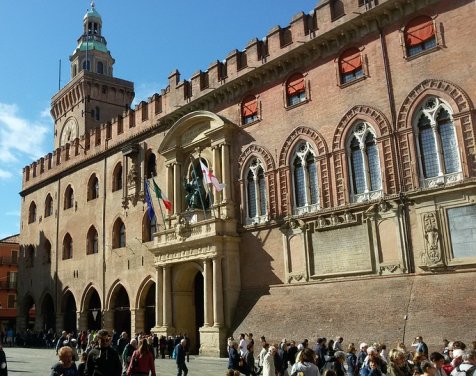 Walking around BolognaLike all medieval cities, Bologna is on a human scale: the whole ancient center can be covered on foot in less than an hour. A radial road structure, crossed by concentric circular streets, and in the center Piazza Maggiore, a place of lively public life and intense economic activity, where the most important ancient buildings are located. Palazzo D'Accursio, a set of buildings united to an older nucleus acquired by the municipality at the end of the 13th century, enriched in the 15th century by the clock on the tower. It includes a multimedia library in Art Nouveau style, Roman archaeological, a XVI cordoned staircase of Bramante for the ascent on horseback by the representatives of the city, and a number of halls-loggias and chapels: Sala d'Ercole, Sala of the Town Council, Sala Farnese, Cappella Farnese, Sala Rossa and Sala Urbana. 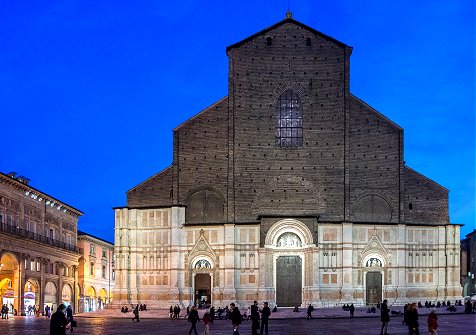 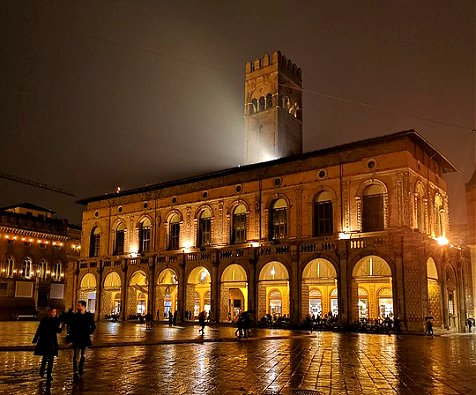 Palazzo di Re Enzo, was built between 1244 and 1246 as an extension of the Palazzo del Podestà and its Sala dei Trecento was the city archive. Owes its name to Enzo di Svevia, king of Sardinia, son of Frederick II and imperial legate, protagonist and leader in the clash between Empire, Municipalities and Pope. Captured by the Bolognese cavalry, was locked up here until his death. In the square of Re Enzo there is the well-known fountain with the statue of Neptune. 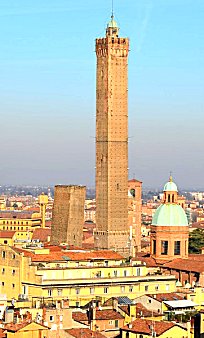 The Torre degli Asinelli, 97 meters high, was built in the early 1100s. Its internal staircase of 498 steps leads to a spectacular view of the city from above. In the same period the Garisenda was built. It was later lowered to only 47 meters for fear of collapse due to the subsidence of the land, as can be seen from its steep slope. The Archiginnasio is to the side of the cathedral and dates back to the 16th century, during the years of the Council of Trent. It is one of the most important buildings in the city, once the main building of the University. Externally a porch 140 meters long, inside a courtyard with two line of loggias and stairways leading to the upper floor study rooms of legisti (students of civil and canon law), and artisti (students of philosophy, literature, medicine, …). The upper level houses the Anatomical theatre built in 1636. the hall for anatomy lectures and displays. It is an amphitheatre made with numerous sculptures on the walls representing doctors from ancient and modern times. In 1803 the seat of the University was moved to the XV century Palazzo Poggi, already seat of the Academy of Sciences since 1714. 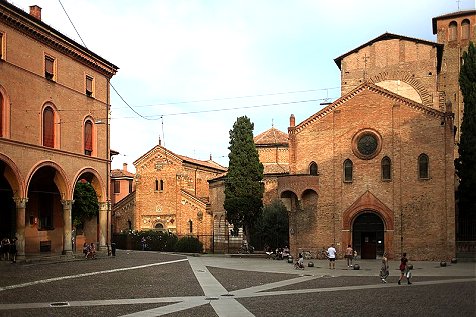 From the beautiful Piazza Santo Stefano there is an overview of the facades of the three churches of the Crucifix, the Sepulcher and the Saints Vitale and Agricola. The Chiesa del Crocifisso was built during the 7th century by the Lombards with a minimalist style. To see inside a crucifix from 1300, the statue of the Dead Christ, and the Cripta del Sepolcro under the presbytery. The Church of the Santo Sepolcro octagonal and entirely dominated by the large central pulpit, dates back to the 5th century and was build above an ancient temple of the goddess Isis. It was designed to reproduce the place where Christ’s remains were deposited after his death. 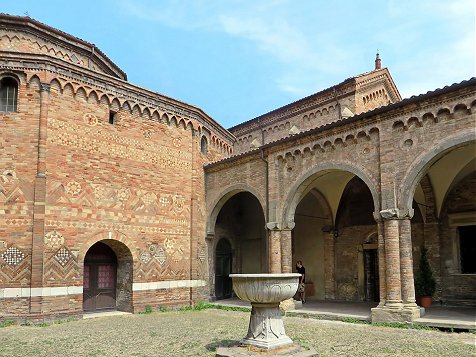 The Chiesa della Trinità or Martirium was built by San Petronio‘ and was rebuilt several times by the Longobards, becoming a baptistery and later modified by the Benedictine monks. A must-see is the oldest nativity scene with wooden human-size figures that dates back to the 12th century. Inside the complex there is the romanic Courtyard of Pilato and the beautiful medieval cloister.
| |
|
| Powered by MMS vers. 3.1 - © 2022 ETEAM International Ltd |
|---|


